When you pick up a prescription at the pharmacy, you might not think twice about whether it’s the brand-name drug or the cheaper generic. But behind that simple choice lies a complex web of policies, politics, and profit margins that vary wildly from one country to the next. In the United States, 90% of prescriptions are filled with generics. In Germany, it’s 79%. In India, generics make up 20% of the world’s supply by volume. Yet, in some places, the same pill costs ten times more than in another - even though it’s chemically identical.
Why Generics Matter More Than You Think
Generic drugs aren’t knockoffs. They’re exact copies of brand-name medicines, approved after patents expire. They work the same way. They have the same active ingredients, the same dosages, the same side effects. The only difference? Price. And that difference saves billions. In the U.S., generic drugs saved Medicare $142 billion in 2025 alone - that’s $2,643 per beneficiary. In the European Union, generics make up 65% of all prescriptions but only 22% of total drug spending. In China, a single government procurement program slashed prices by over 54% on average. These aren’t minor savings. They’re the difference between someone taking their blood pressure medication or skipping it because they can’t afford it. The global generic drug market hit $468 billion in 2025 and is expected to grow to nearly $729 billion by 2034. Why? Aging populations. Rising chronic diseases like diabetes and heart failure. And governments under pressure to control healthcare costs. But how each country gets there is wildly different.The U.S. Model: High Volume, Low Prices, But Still High Overall Costs
The U.S. has the highest rate of generic use in the developed world. Over 90% of prescriptions are for generics. The FDA has approved more than 11,000 generic products. And prices? They’re among the lowest in the world - for generics, anyway. But here’s the twist: even though generics are cheap, the U.S. still pays more for drugs overall than any other country. Why? Because the brand-name drugs are outrageously expensive. A single course of a new cancer drug can cost $100,000. Generics keep the system from collapsing, but they don’t fix the root problem. The U.S. also has a special shortcut called Competitive Generic Therapy (CGT). If a drug has little competition, the FDA fast-tracks approval. Zenara Pharma got CGT status for its generic version of sertraline in August 2025, cutting approval time from 18 months to under 10. That’s the exception, not the rule. Still, it shows how targeted policy can speed up access. But there’s a catch. Pharmacy Benefit Managers (PBMs) - the middlemen between insurers and pharmacies - sometimes charge patients higher copays for generics than for brand-name drugs. Reddit users in June 2025 reported this frustration: 63% said they were penalized for choosing cheaper options. It’s a broken incentive system. The goal is affordability, but the system rewards confusion.Europe: Harmonized Rules, Fragmented Prices
The European Medicines Agency (EMA) approves generics for all 27 EU countries. Sounds efficient, right? Not quite. Each country sets its own prices. So a generic blood thinner approved in Brussels can cost 300% more in Italy than in Poland. That’s not a mistake. It’s policy. Some countries use external reference pricing - comparing prices to other nations. The Netherlands picks France, Belgium, the UK, and Norway as benchmarks. Then it picks the lowest price among them. Sometimes, it picks a non-EU country to get an even lower rate. Germany mandates pharmacists to substitute generics unless the doctor says no. Italy? No such rule. That’s why Germany hits 88% generic use, while Italy only reaches 67%. The same drug. Same quality. Different price. Different access. The EU is trying to fix this. A new Pharmaceutical Package is set to be adopted in late 2025. It will push for faster generic entry and better price coordination. But will it work? Past efforts have failed. Fragmentation is built into the system.China: The Great Bulk Buy
China’s Volume-Based Procurement (VBP) program is the most aggressive price-cutting system on the planet. It doesn’t negotiate. It auctions. In 2018, China started selecting hospitals to bid on bulk purchases of generic drugs. Manufacturers compete to offer the lowest price. The winner gets to supply 80% of the country’s demand for that drug. The result? Average price drops of 54.7%. In some cases - like a common diabetes drug - prices fell by 93%. It works. Patients pay less. The government saves billions. But it’s brutal on manufacturers. A 2025 survey found 23% of generic makers in China are selling at a loss. Some stopped production. In 2024, a shortage of amlodipine - a blood pressure drug - hit 12 provinces for weeks. Patients went without. Hospitals scrambled. China’s system is efficient, but fragile. If manufacturers can’t make money, they stop making the drug. And when a drug is essential - like an anticoagulant or an epilepsy medicine - that’s dangerous.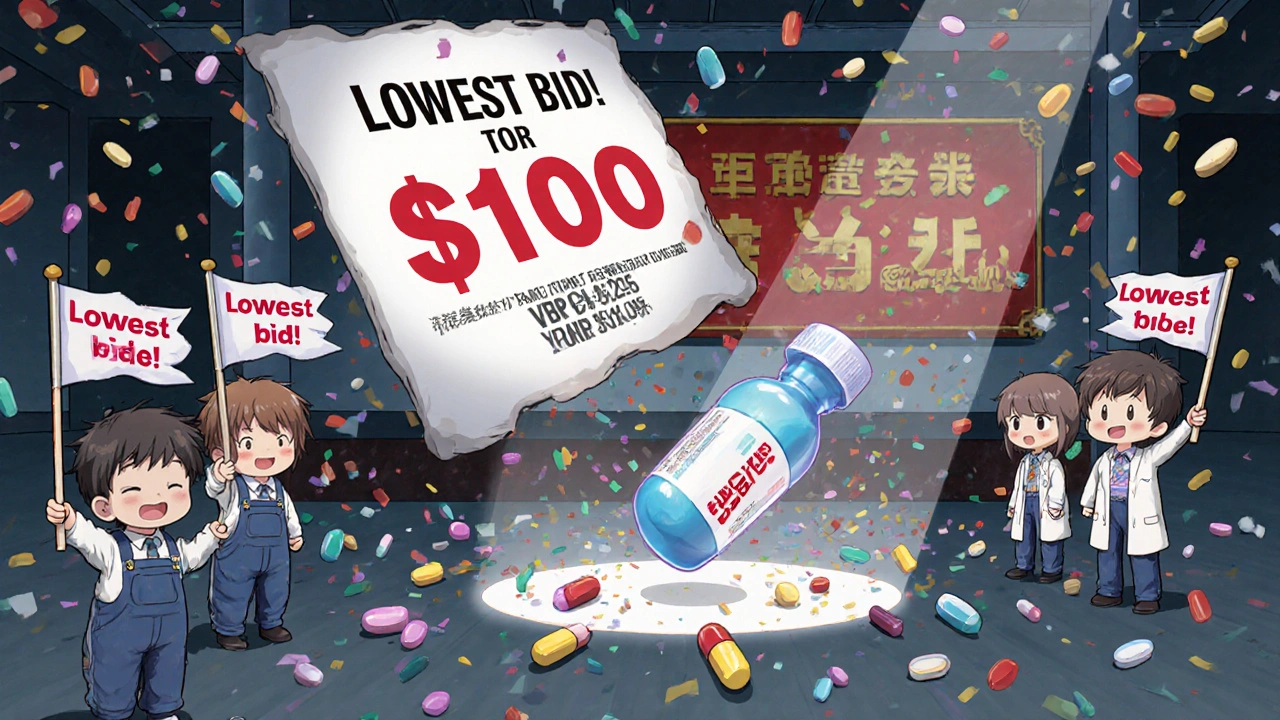
India: The Pharmacy of the World
India produces one in five generic pills used worldwide. It’s not because Indians are cheap. It’s because the law lets them be bold. Under Section 84 of India’s Patents Act, the government can issue compulsory licenses - allowing local companies to make a drug even if the patent is still active. This happened with HIV drugs in the early 2000s, and again with cancer drugs in 2012. The result? Life-saving medicines became affordable across Africa and Asia. But there’s a dark side. The FDA issued 17% more warning letters to Indian generic manufacturers between 2022 and 2024. Many were about data integrity - falsified test results, skipped quality checks. The Access to Medicine Foundation warns that pushing prices too low risks cutting corners on safety. Indian doctors report inconsistent bioavailability in some generics, especially for drugs with narrow therapeutic windows - like warfarin or phenytoin. One pill might work. The next might not. It’s not always the manufacturer’s fault. Regulatory oversight is stretched thin.South Korea: The Tightrope Walk
South Korea tried something new in 2020: the “1+3 Bioequivalence Policy.” Only the first generic and three others could enter the market. After that, no more. The goal? Stop the flood of identical, low-quality generics that drove prices into the ground. It worked. Redundant entries dropped by 41%. But it also cut new generic launches by 29%. Fewer competitors meant slower price drops. The government then introduced a pricing tier system: generics that meet both quality and price standards get 53.55% of the brand’s price. Those that meet only one get 45.52%. The rest? Just 38.69%. It’s a clever system. But it’s also a gamble. By limiting competition, they risk creating monopolies. And when there’s no competition, prices don’t fall.Japan: The Slow Squeeze
Japan doesn’t use auctions or bulk buying. It uses time. Every two years, the government forces all drugs - branded and generic - to drop in price. No negotiation. No bidding. Just a mandatory cut. The result? Generic use is high - 76.8% by volume in 2024 - but the market barely grows. Manufacturers can’t plan. Profits shrink. Innovation stalls. But patients get cheaper drugs. It’s a trade-off.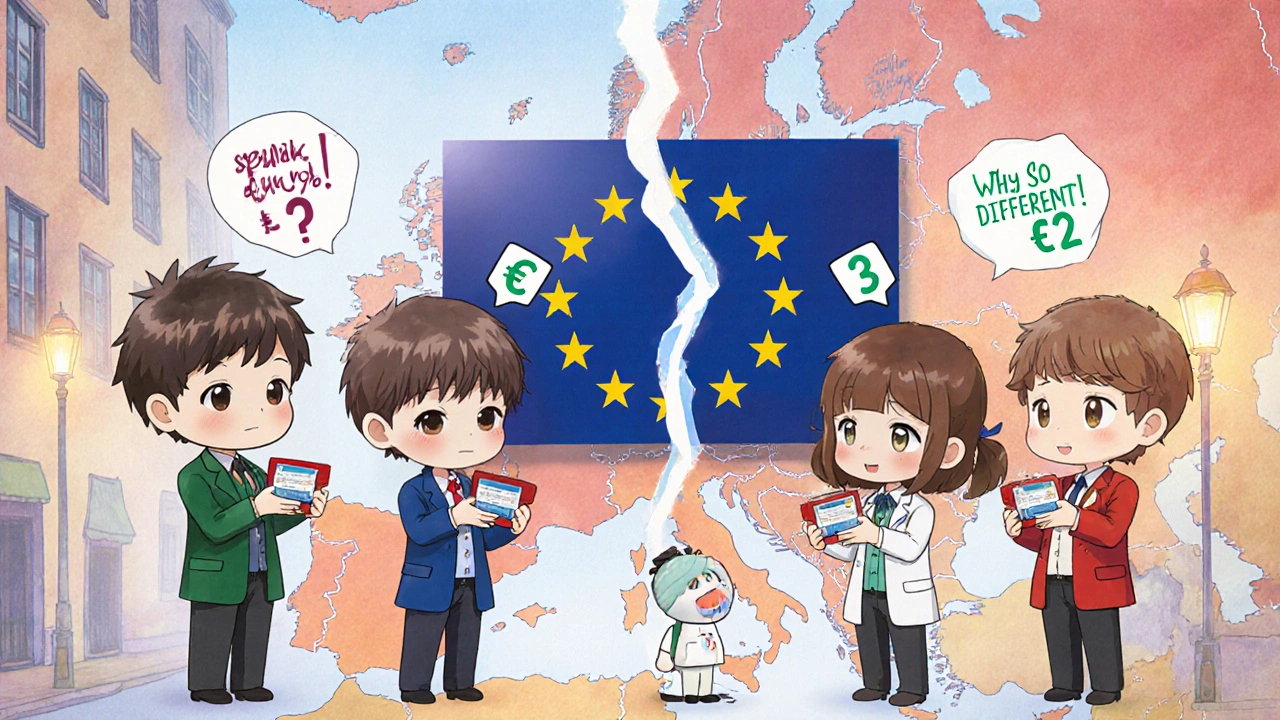
What Works? What Doesn’t?
There’s no single right answer. But some patterns emerge. What works:- High generic penetration (90%+) - like in the U.S. and Germany - keeps costs down for patients.
- Transparency in pricing - like South Korea’s tiered system - helps manufacturers plan and patients trust.
- Fast-track approvals - like the U.S. CGT program - get life-saving generics to market quicker.
- Pharmacist education - proven to increase generic acceptance by 22-35% - reduces patient fear.
- Price cuts below manufacturing cost - like in China - cause shortages.
- Fragmented pricing - like in Europe - creates unfair access.
- Weak oversight - like in parts of India - risks patient safety.
- Limiting competition too early - like in South Korea - slows price drops.
The Future: More Patents Expiring, More Pressure
Between 2025 and 2030, $217-236 billion in branded drug sales will lose patent protection. That’s a gold rush for generic makers - if the system lets them in. The U.S. Inflation Reduction Act will let Medicare negotiate prices on 10-20 high-cost drugs starting in 2028. That could force more patients onto generics. The EU’s new rules might speed up approvals. China’s next VBP round will include 150 more drugs - with prices 65% lower than current levels. But the biggest threat isn’t policy. It’s quality. As margins shrink, manufacturers cut corners. The FDA issued over 2,100 import alerts for quality issues in 2024 - up from 1,247 in 2020. That’s not just a statistic. It’s a warning. The World Health Organization says sustainable pricing must include at least a 15-20% gross margin for manufacturers. Otherwise, they leave. Or worse - they stay, but cut safety.What Patients Should Know
You don’t need to be an expert to use generics safely. But you should know a few things:- Generics are not inferior. They’re legally required to work the same.
- If your generic suddenly feels different - more side effects, less effect - tell your doctor. It could be a formulation change, not your body.
- Ask your pharmacist: “Is this the same as the brand?” They can tell you.
- If your insurance charges you more for the generic, ask why. It’s not normal.
Are generic drugs really as effective as brand-name drugs?
Yes. Generic drugs must meet the same strict standards as brand-name drugs. They contain the same active ingredient, in the same strength and dosage form. Regulatory agencies like the FDA and EMA require bioequivalence testing - meaning the generic must deliver the same amount of medicine into your bloodstream at the same rate as the brand. Studies show no meaningful difference in effectiveness for over 90% of generic drugs. The only exceptions are a few narrow therapeutic index drugs, like warfarin or levothyroxine, where small changes matter more - but even then, most generics are safe and effective.
Why do some people say generics don’t work for them?
Sometimes, it’s not the drug - it’s the filler. Generics use different inactive ingredients (like dyes or binders) than the brand. For most people, this makes no difference. But a small number of patients report side effects or changes in how they feel after switching. This can happen with drugs that have a narrow therapeutic window, like seizure or heart medications. If you notice a change, don’t assume the generic is bad. Talk to your doctor. They can check if it’s a formulation issue or if you need to switch back.
Why are generics cheaper if they’re the same?
Branded drugs cost a lot because the company spent years and millions developing them - testing, clinical trials, marketing. Once the patent expires, other companies can copy the formula without those upfront costs. They don’t need to run new clinical trials. They just prove their version works the same. That’s why generics cost 80-90% less. It’s not about quality. It’s about avoiding duplicate research costs.
Can I trust generics made in India or China?
Many top generic manufacturers are based in India and China, and they supply drugs to the U.S., EU, and beyond. These companies are inspected by the FDA, EMA, and other regulators. Most meet global standards. But there are exceptions. The FDA has increased import alerts for quality issues from these countries in recent years. That doesn’t mean all products are unsafe - but it does mean you should rely on trusted pharmacies and avoid unregulated online sellers. If your doctor or pharmacist recommends a generic, it’s been vetted.
Why does my insurance sometimes charge more for a generic than a brand-name drug?
That’s usually a problem with your Pharmacy Benefit Manager (PBM), not the drug. PBMs are middlemen who negotiate prices between insurers and pharmacies. Sometimes, they structure copays to steer patients toward more expensive drugs - even if a cheaper generic exists. This happens when the PBM gets a rebate from the brand-name maker. It’s not common, but it’s real. Ask your pharmacist to check your formulary. If the generic costs more, ask your insurer to explain why. You have the right to know.
Will shortages of generic drugs keep happening?
Yes - unless pricing systems change. Shortages happen when manufacturers can’t make money on a drug. In China, VBP price cuts led to 6-8 week shortages of amlodipine. In the U.S., a generic antibiotic went missing for months because no one could produce it profitably. The solution isn’t to raise prices wildly - it’s to ensure manufacturers earn enough to keep making essential drugs. Governments need to balance affordability with sustainability. Otherwise, patients pay the price in delays and gaps in care.

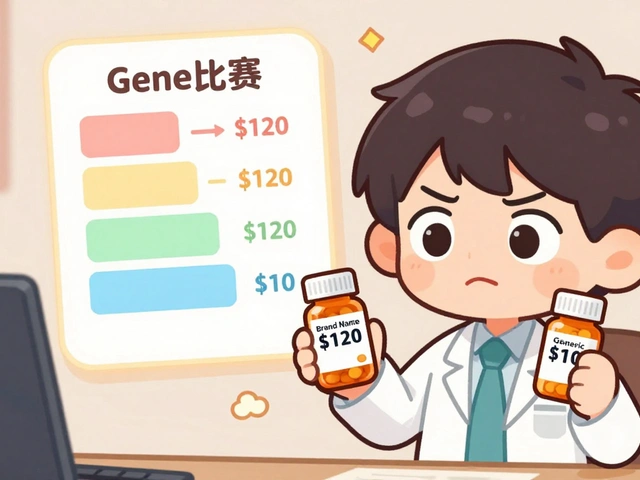
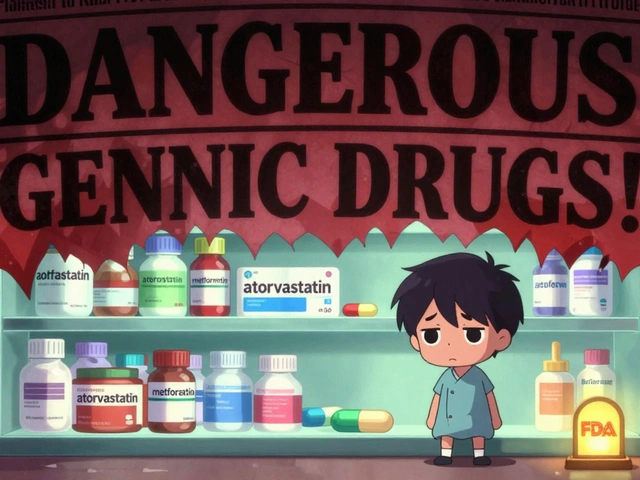
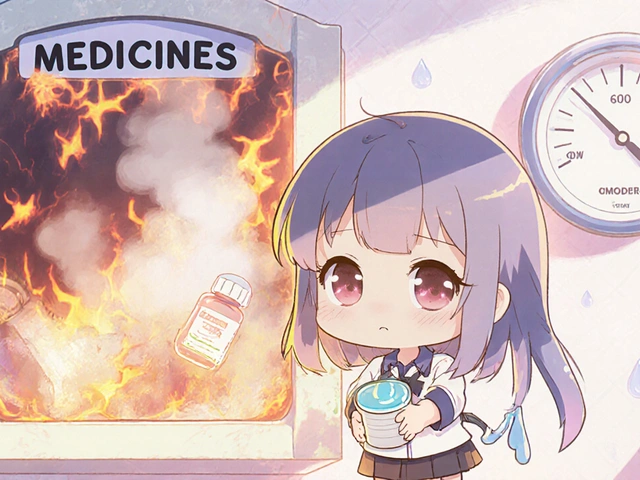
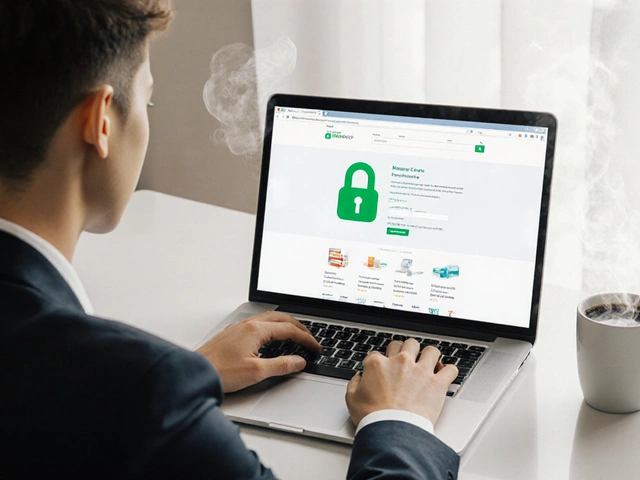

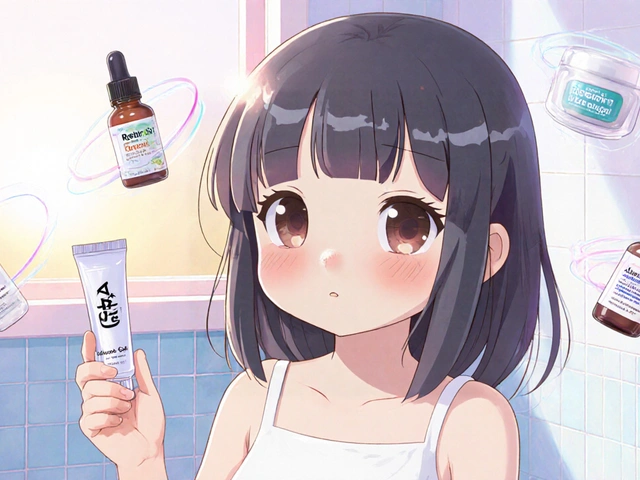
Ragini Sharma
November 22, 2025 AT 06:36soooo india makes 1/5 of the world's generics and yet we still get flagged by the fda like we're smuggling counterfeit viagra? lol. the truth? we make em cheap because we can, not because we're lazy. but yeah, some labs cut corners when the price drops to 2 cents a pill. still better than paying $500 for the same thing in the us. #pharmacyoftheworld #butpleasefixyourqualitycontrol
Linda Rosie
November 22, 2025 AT 22:19Generics are clinically equivalent. The regulatory frameworks are robust. Cost savings are substantial.
Vivian C Martinez
November 24, 2025 AT 06:43It's amazing how much good generics do for people who otherwise couldn't afford treatment. I've seen friends choose between rent and their heart meds-until generics came along. Small changes in policy can save real lives. Keep pushing for transparency and fairness.
Ross Ruprecht
November 24, 2025 AT 22:27bro why are we even talking about this. just get your pills and shut up. i got my generic sertraline for $4 at walmart. problem solved.
Bryson Carroll
November 25, 2025 AT 03:17Let’s be real-this whole system is a circus. The US pays more because it’s a profit-driven dumpster fire. Europe’s fragmented pricing? Pathetic. China’s auction system? Brutal but efficient. India? A minefield of regulatory violations wrapped in moral superiority. And don’t get me started on PBMs-they’re the real villains. Everyone’s just trying to survive while pretending they care about patients
Manjistha Roy
November 25, 2025 AT 06:01As someone who grew up watching my mother ration her hypertension pills, I can tell you this: generics aren't just about cost-they're about dignity. When the government in India allowed us to make affordable HIV drugs, it didn't just save lives-it restored hope. Yes, there are quality concerns. Yes, oversight is stretched thin. But we're trying. We're learning. And we're not giving up. Let's support better regulation, not just blame.
Adrian Rios
November 26, 2025 AT 07:11Look, I get it-generics are cheaper, but let’s not pretend they’re all created equal. I had a bad reaction to a generic version of my thyroid med. Same active ingredient, sure. But the fillers? Different. My heart started racing. My doctor said it was ‘just the formulation.’ I switched back to brand. My anxiety dropped. The system says it’s the same. My body says otherwise. And if you’ve ever been on a narrow therapeutic index drug, you know what I mean. Trust your body. Don’t let bureaucracy tell you what you feel isn’t real.
Casper van Hoof
November 26, 2025 AT 21:07The philosophical underpinning of generic drug access reveals a fundamental tension between utilitarianism and market liberalism. When a life-saving pharmaceutical is commodified, the ethical calculus shifts from individual autonomy to collective welfare. The state’s intervention in pricing mechanisms-whether through bulk procurement or compulsory licensing-constitutes a redefinition of the social contract. One might argue that the market, left unregulated, would naturally optimize access through innovation. Yet history demonstrates that profit motives, when unbridled, render essential medicines inaccessible to the very populations they were designed to serve. Thus, the state must assume the role of moral steward-not merely as regulator, but as guardian of human dignity.
Suresh Ramaiyan
November 28, 2025 AT 19:50It’s not about which country does it best-it’s about what works for the people. India’s boldness saved millions in Africa. China’s auctions cut prices but risked shortages. The U.S. has volume but broken incentives. Europe has rules but no unity. Maybe the real answer isn’t copying one model, but blending them: fast approvals like the U.S., price controls like China, pharmacist education like Germany, and quality oversight like the EU. We need systems that balance affordability, access, and safety-not just one priority.
Olanrewaju Jeph
November 29, 2025 AT 04:01As a healthcare worker in Nigeria, I see firsthand how Indian generics keep our clinics running. We don't have the luxury of brand-name drugs. But I also know the risks-some batches are inconsistent. Still, better than nothing. We need international support to strengthen local labs, not just blame. The solution isn't to stop generics-it's to make them safer.
Dalton Adams
November 29, 2025 AT 09:38Oh wow, another ‘let’s save the world with generics’ post 😤 I’ve been reading FDA import alerts since 2020 and let me tell you-most of the ‘cheap’ generics from India and China are barely one step above bathtub chemistry. The FDA flags them because they’re literally lying about their testing data. And yet here we are, pretending it’s all fine because ‘it’s cheaper.’ No, it’s not. It’s a gamble with people’s lives. And don’t even get me started on PBMs-they’re the real drug dealers. 🤡💸
Kane Ren
November 30, 2025 AT 11:45Generics are the unsung heroes of modern medicine. I used to think they were ‘second-best’ until my dad needed chemo. The brand was $12,000 a dose. The generic? $800. Same results. Same survival rate. We didn’t lose him because of a pill-we lost him because of the system that made him wait. Don’t let anyone tell you generics aren’t powerful. They’re the reason millions wake up healthy every day.
Charmaine Barcelon
November 30, 2025 AT 15:21You people are so naive. You think generics are safe? They’re not. The FDA catches so many fake ones, and you still buy them? Your pharmacist doesn’t know what’s in them. Your doctor doesn’t care. You’re just trusting strangers on the internet. I stopped taking generics after my friend had a seizure. It was the pill. Don’t be stupid.